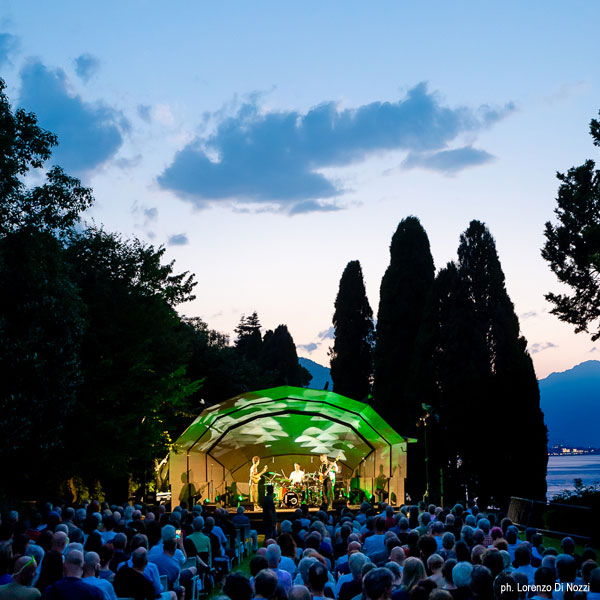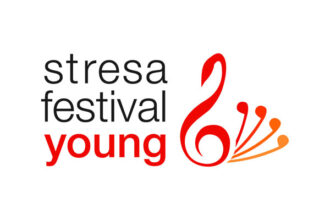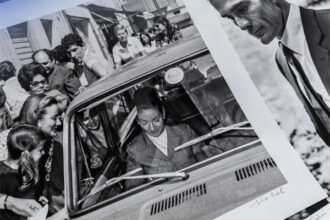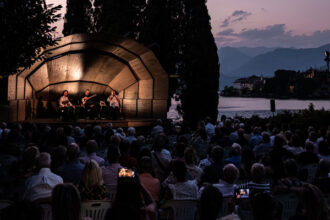Isola Jazz, free music.
A new opening, ‘other’, hosting jazz and ‘free’ music that draws on many disciplines, art forms and sound.
Egberto Gismonti is an icon of this tradition, expressing the full sense of free, improvised music.

This first island in our archipelago makes a tribute to free music – the Isola Jazz.
La Catapulta, the precious gem of the Festival, becomes the perfect place for the encounter between music and architecture. Outdoor music fills the air, blending with the sounds, scents, and colors of nature, while the acoustics of the stage amplify the magic of this fusion.
To show off some locations other than the Festival Hall, this year the acoustic stage will be on the Lungolago La Palazzola in Stresa for three concerts: Egberto Gismonti, Simone Locarni Trio and Florian Weber in duo with Luigi Grasso.
Egberto Gismonti was born into a musical family in Carmo (Rio de Janeiro state) in 1947. After first studying the piano, he took up the guitar in his teens. He went on to study composition, orchestration and analysis in Paris under Webern’s pupil, Jean Barraqué, and the legendary Nadia Boulanger. On his last day as Boulanger’s student, she told him to “be a little irresponsible in [his] music, just trust and break the rules”.
Gismonti is an icon of this tradition, expressing the full sense of free, improvised music, exploiting various sounds. He is an adaptable player of the various instruments – guitar, piano, flute and voice – accompanying this live performance. Don’t miss it!
A virtuoso piano and guitar player, Gismonti ha built up a corpus of works lying at the crossroads of popular tradition in his native Brazil and classical music, with echoes of his predecessor Heitor Villa-Lobos. This able improviser, with a stunning technique, is capable of evoking an almost orchestral palate of colour.
The Cambridge Companion to the Guitar praised his landmark ECM debut, Dança das Cabeças (1977) – a collaboration with percussionist Nana Vasconcelos – for its “raw intensity of textures and styles [which] reveals an indigenous Brazilian musical world quite different, and more varied, than what one might infer from popular samba and bossa renditions”.
A critical stage in his development was his encounter with the indigenous peoples of the Amazon rain forest and their music: his researches, and human encounters, changed his view of the expressive possibilities of musical language and continue to fertilise his work to this day.
In addition to his work with Vasconcelos, other key collaborations on ECM have included the trio work with Jan Garbarek (saxophone) and Charlie Haden (bass), which has yielded three albums, Magico, Folk Songs and Magico: Carta de Amor.
The subtitle to Gismonti’s Sertoes Veredas (from his 2009 release, Saudaçöes) might almost stand as a motto for his whole oeuvre: “tribute to miscegenation”. This piece gives some indication of the musical languages Gismonti has made his own, referring as it does to Villa-Lobos, Stravinsky, Bach, the dance rituals of the Xingu Indians and more.
Gismonti is a reference point for international music, picking up the modernity binding the deep roots of the extraordinary Brazilian folklore to a language that crosses styles, composition and improvisation.




